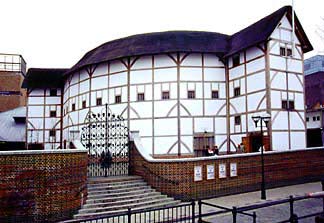 Why do we feel so satisfied when we engage our creativity? Why is singing, writing a play, cooking a wonderful meal, designing a building or outfit, composing a song or sonata, capturing a particular moment in a photograph, or coming up with a new idea, method, or a way of looking at things in the brainstorming session at work so fulfilling? Why does using our imagination feel so wonderful? Why does making the metaphor that perfectly describes something by comparing it to something else feel so gratifying? Why do people make art anyway? Why do people write?
Why do we feel so satisfied when we engage our creativity? Why is singing, writing a play, cooking a wonderful meal, designing a building or outfit, composing a song or sonata, capturing a particular moment in a photograph, or coming up with a new idea, method, or a way of looking at things in the brainstorming session at work so fulfilling? Why does using our imagination feel so wonderful? Why does making the metaphor that perfectly describes something by comparing it to something else feel so gratifying? Why do people make art anyway? Why do people write?
 A few weeks ago, while visiting family in England, we took a long overdue visit to see a production at London's new Globe Theatre.
Located in the heart of London's South Bank close to the Thames (just 750 feet away from the location of the original Globe), the Globe plays to a capacity crowd of 1600 twice a day and has, in the fifteen years since it opened, become one of London's most popular tourist destinations. Considering the pride that the British have in Shakespeare you might have thought that a reconstruction of the Globe would have been a "no brainer" project supported by people across the United Kingdom - but that was far from the case. In fact, I hope it will warm the cockles of BookBrowse's mostly American readers to know that the modern-day Globe Theatre would not exist if it wasn't for the vision and determination of one singular American - Sam Wanamaker.
A few weeks ago, while visiting family in England, we took a long overdue visit to see a production at London's new Globe Theatre.
Located in the heart of London's South Bank close to the Thames (just 750 feet away from the location of the original Globe), the Globe plays to a capacity crowd of 1600 twice a day and has, in the fifteen years since it opened, become one of London's most popular tourist destinations. Considering the pride that the British have in Shakespeare you might have thought that a reconstruction of the Globe would have been a "no brainer" project supported by people across the United Kingdom - but that was far from the case. In fact, I hope it will warm the cockles of BookBrowse's mostly American readers to know that the modern-day Globe Theatre would not exist if it wasn't for the vision and determination of one singular American - Sam Wanamaker.

"When we want a book exactly like the one we just finished reading, what we really want is to recreate that pleasurable experience--the headlong rush to the last page, the falling into a character's life, the deeper understanding we've gotten of a place or a time, or the feeling of reading words that are put together in a way that causes us to look at the world differently. We need to start thinking about what it is about a book that draws us in, rather than what the book is about."
—Nancy Pearl, on The Four Doors to Reading
Readers often ask us how BookBrowse's Read-Alikes are selected. Companies like Netflix, Amazon, and GoodReads use complex algorithms to generate recommendations, so I think lots of readers assume we do, too. Our method is a lot less high-tech (actually, no-tech), and far more personal: we pick them by hand. But what criteria do we use to select them? When we read about librarian Nancy Pearl's Four Doors to Reading (also known as the Rule of Four), we realized she was pretty much describing how we think about our Read-Alikes. Pearl asserts that "all works of fiction and narrative nonfiction are broadly made up of four experiential elements: story, character, setting, and language." She refers to these elements as doorways, some of them larger or smaller depending on the dominant element of each book:
I received an email recently from Ken which read, "I am looking for a book, or biography, or a life experience narrative that speaks to an older male, lives alone, has no health issues, widower. There seem to be plenty of books out there written by and for women, but would like to know how other men have traveled this road?"
If you're intrigued by the success of E.L. James's "Fifty Shades of Grey" trilogy (currently at #1, 2 and 3 in the NY Times bestseller lists), you might be interested in this Publishers Weekly article which puts the series into the context of the wider book market: